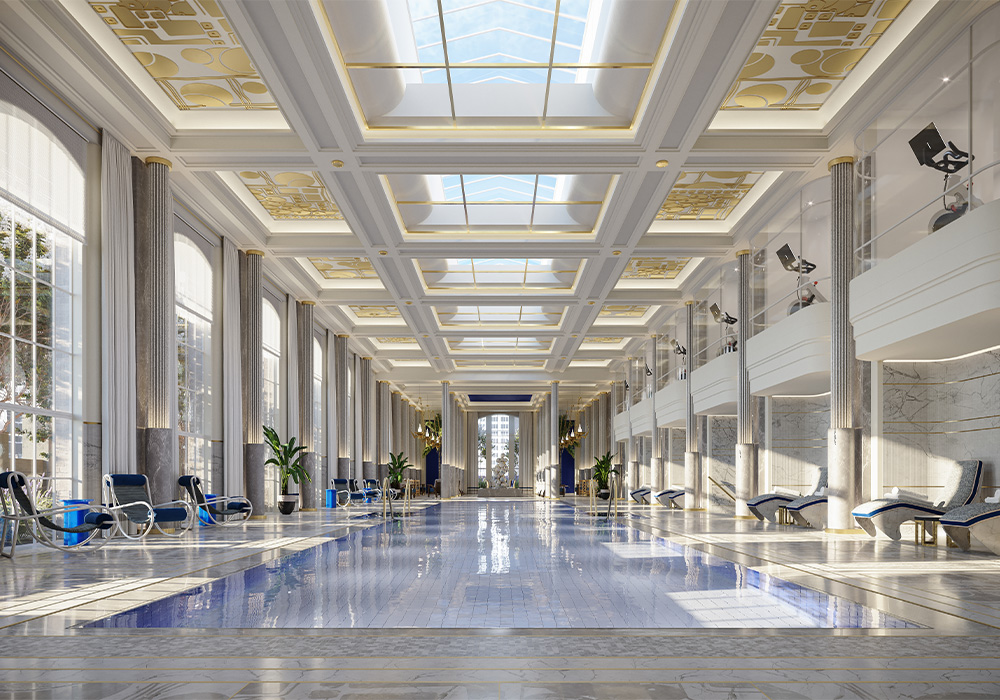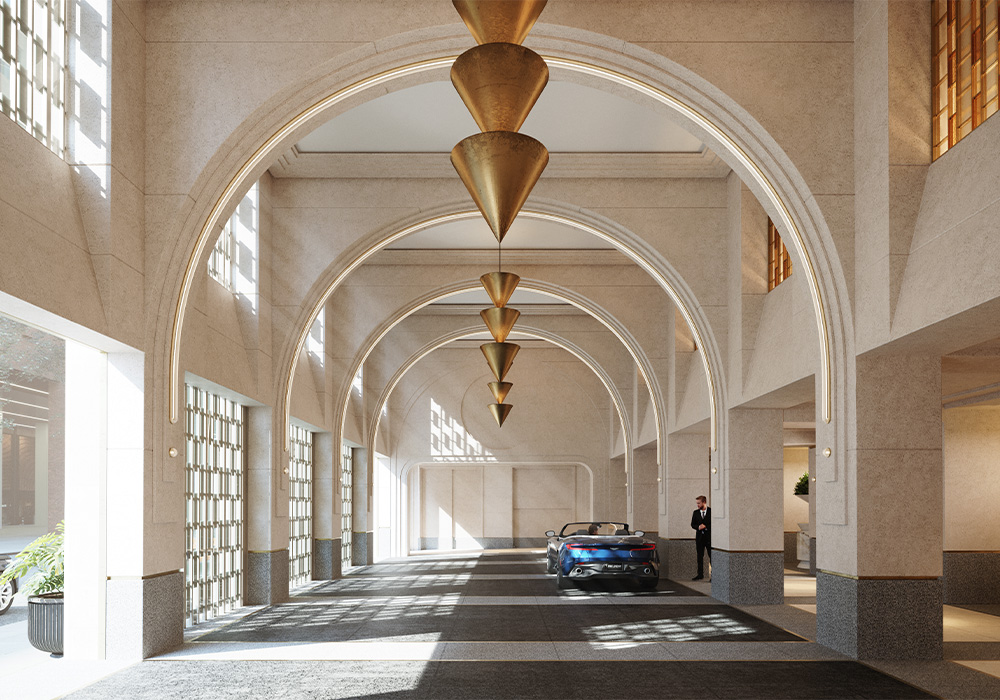To say that history is the mortar between the bricks from which New York’s Waldorf Astoria is made is only a slightly florid way of putting it. With a facade comprising a cladding specially produced for the hotel in a shade that came to be popularised as ‘Waldorf Gray’, it’s really inside what is arguably the city’s most famous hotel that the stories were written.

It was here that Red Velvet cake and, of course, the Waldorf Salad were invented. It’s where Grace Kelly and Prince Rainer of Monaco held their engagement party but also where the Allies met to decide the fate of Eastern Europe after World War Two. It’s where the likes of Marilyn Monroe and Cole Porter at one time lived, Porter for 25 years. Frank Sinatra then paid $1m a year to live in Porter’s apartment. The Waldorf Astoria lived big – appropriately enough for a building that covers an entire block, and which was the tallest hotel in the world when it was opened.
That all said, still there were a few sharp intakes of breath – even among New York property developers – when the Chinese insurance giant Anbang bought the hotel from Hilton six years ago, for US$1.95bn, a record for a hotel purchase. Now, just as the Waldorf Astoria marks its 90th birthday next year, their plan becomes a little clearer, albeit after an additional US$2.6bn spend.

 What on? Part of it will go to converting some of the hotel’s 1,413 rooms into 375 much bigger ones, with the intention of offering the most space to well-heeled travellers visiting the city. That work is due for completion in 2022. In the meantime, the upper third or so of the building has been converted into 375 condominiums, grandly dubbed The Towers of the Waldorf Astoria Residences. Those with between US$1.7m and around US$18m can get in the queue to buy one now. And they won’t be doing so just to get some 21st century Art Deco styling from interior designer Jean-Louis Deniot, as nice as that it. Quartzite kitchen counter-tops? Check. Inlaid marble entry hall? Check. But all the same.
What on? Part of it will go to converting some of the hotel’s 1,413 rooms into 375 much bigger ones, with the intention of offering the most space to well-heeled travellers visiting the city. That work is due for completion in 2022. In the meantime, the upper third or so of the building has been converted into 375 condominiums, grandly dubbed The Towers of the Waldorf Astoria Residences. Those with between US$1.7m and around US$18m can get in the queue to buy one now. And they won’t be doing so just to get some 21st century Art Deco styling from interior designer Jean-Louis Deniot, as nice as that it. Quartzite kitchen counter-tops? Check. Inlaid marble entry hall? Check. But all the same.
“What’s different [about this project] is simply that the Waldorf Astoria is an icon. This is an opportunity to own a home at one of the most celebrated addresses in the world,” argues Andrew Miller, CEO of Dajia US. “The Waldorf Astoria has been, as it were, New York’s living room, where the city went to celebrate. This is about connecting with the history of the hotel, but in a way that’s modern, so that it remains relevant for the next 90 years. It’s in keeping with the spirit of Art Deco, but then the point is that Art Deco was always forward-looking, always about what was exciting and next.”

 And next, it seems, is smaller. Contrary to recent years’ trend for New York apartments to get ever more palatial, the average one in the Waldorf Astoria will be relatively bijou. But here’s the thing. As well as that, owners will be buying access to an additional 50,000 sqft of private amenities – the more usual theatre/cinema, gym, spa, creche, games room, library, work spaces and bars, but also a 25m rooftop pool and surrounding gardens, a year-round tropical conservatory and use of all of the hotel’s services.
And next, it seems, is smaller. Contrary to recent years’ trend for New York apartments to get ever more palatial, the average one in the Waldorf Astoria will be relatively bijou. But here’s the thing. As well as that, owners will be buying access to an additional 50,000 sqft of private amenities – the more usual theatre/cinema, gym, spa, creche, games room, library, work spaces and bars, but also a 25m rooftop pool and surrounding gardens, a year-round tropical conservatory and use of all of the hotel’s services.
Most developers would take this space and make more apartments out of it. Dajia is gambling that potential buyers will see the sense of a smaller pad – a surefire asset, of course – with vast extra space for all the fun stuff. They’ll even be able to tinkle on Cole Porter’s ivories. Dajia has restored his piano to sit in the residences’ lobby. And, yes, should someone really hammer the keys, it’s insured for several million dollars.




